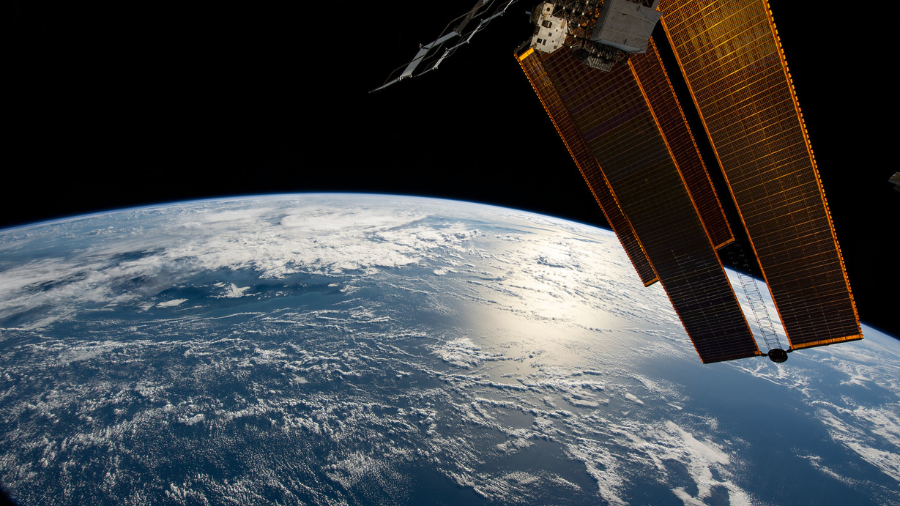Public Policy and Government Affairs
Biweekly Washington, D.C. Updates for the Week Ending August 5, 2022
Written by: Elizabeth Anderson

This week in Washington: President Biden nominated Lieutenant General Chance Saltzman to succeed General Jay Raymond as the head of Space Force, the NASA Authorization Bill was passed for the first time in five years as a part of the CHIPS and Science Act and will head to the President’s desk, the Senate Appropriations Committee released its Chairman’s Marks for FY23 Appropriation Bills, and China had multiple satellite launches and an uncontrolled reentry of a Long March 5B rocket.
United States Space Policy Updates
- The National Aeronautics and Space Administration (NASA)-SpaceX Crew 5 launch slipped to late September (Space.com, July 22)
- President Biden nominated Lieutenant General Saltzman to be the next Chief of Space Operations, following General Jay Raymond’s retirement later this year (Via Satellite, July 28)
- The Senate Appropriations Committee released its Chairman’s Marks for the FY23 Appropriation Bills. The Subcommittee on Defense was allocated $792.1 billion and the Subcommittee on Commerce, Justice, and Science was allocated $85.83 billion (Committee on Appropriations, July 28)
- The House and the Senate passed the first NASA Authorization Bill in five years, as a part of the CHIPS and Science Act. President Biden is expected to sign the Act into law (Space Policy Online, July 28)
- NASA revised requirements for private astronaut missions to the International Space Station. The most significant change calls for a former NASA astronaut commander to lead the mission, as well as increased adaptation time for private astronauts (NASA, August 1)
- NASA’s Double Asteroid Redirection Test (DART) experiment is on track to impact a target on September 26th, but a similar program in China raises concerns (Breaking Defense, August 3)
International Space Policy Updates
- The Hungarian government signed a memorandum of understanding (MOU) with Axiom Space to further Hungary’s astronaut program and international scientific collaboration (Hungary Today, July 23)
- Blue Origin’s August flight will include the first Egyptian and Portuguese astronauts (Geekwire, July 30)
- China’s second module docked at its Tiangong space station (Space News, July 24)
- The Chinese Aerospace Science and Technology Corporation (CASC) launched 35 military reconnaissance satellites (NASA Space Flight, July 29)
- The Chinese Long March 5B rocket made an uncontrolled reentry and debris landed in South East Asia (The Washington Post, July 30)
- Roscosmos announced its intention to leave the International Space Station after 2024 on July 26th and amended its position three days later, saying it will abide to the two year withdrawal period required in the ISS contract (Space News, July 31)
- The European Space Agency (ESA) officially has ended its efforts to recover the Sentinel-1 radar imaging satellite (Space News, August 3)
- South Korea’s first satellite to explore past Earth orbit, the Korean Pathfinder Lunar Orbiter, launched from Kennedy Space Center (Space.com, August 4)
Space Industry Updates
- NASA awarded a $73 million contract to Draper for sending research to the dark side of the Moon (NASA, July 22)
- Eutelsat and OneWeb reached an agreement for combining GEO/LEO entities (Satellite Today, July 26)
- Viasat signed an agreement with ESA to fund a multi-orbit satellite communications study (Space News, July 26)
- Ball Aerospace won two NASA contracts to support the National Oceanic and Atmospheric Administration (NOAA)’s weather instrument studies (Yahoo Finance, July 28)
- Masten Space Systems filed for bankruptcy. NASA shared they will turn to other Commercial Lunar Payload Services (CLPS) providers to manifest the contracted payloads (Space News, July 29)
- Slingshot Aerospace acquired the space domain awareness division of Numerica and UK-based space data firm Seradata (Space News, August 3)
- Blue Origin successfully launched its sixth suborbital flight, on its New Shepard spacecraft (NASA Spaceflight, August 4)
- United Launch Alliance successfully launched the sixth Space Based Infrared Geosynchronous Orbit (SBIRS GEO 6) for the US Space Force Space Systems Command, on its Atlas V rocket (ULA, August 4)
- Rocket Lab successfully launched an NRO payload from New Zealand, on its Electron rocket (Yahoo Finance, August 4)
Space Foundation Virtual Events
Space Matters
Space Foundation’s second season of “Space Matters” convenes well-known policy influencers for monthly high level space policy conversations on emerging topics and trends within the global space economy. Join us for the second episode of season two with panelists Congressman Robert Walker, former NASA Administrator Jim Bridenstine, BryceTech’s Carissa Christianson, and Constellation Advisory’s Patricia Cooper.
Start Here for Space
In our first episode of a special season of Start Here for Space, the Head of European Space Agency’s Washington Office, Sylvie Espinasse, shares insight into ESA operations, the agency’s presence in DC, and international cooperation between ESA and the United States. Join us here for the first episode of the season!
Space Leader Spotlight
Lt Gen Chance Saltzman
This week’s space leader profile goes to President Biden’s nominee for the second Chief of Space Operations, Lieutenant General B. Chance Saltzmann. The Chief of Space Operations is the highest ranking position in the United States Space Force. Lt Gen Saltzmann currently serves as the Deputy Chief of Space Operations for Operations, Cyber, and Nuclear at the Pentagon. In this role, he has overall responsibility for operations, intelligence, sustainment, cyber, and nuclear operations for the Space Force.
In previous roles, Lt Gen Salzmann served as Deputy Commander, US Air Forces CENTCOM, Deputy, Combined Force Air Component of US Central Command, Southwest Asia, and first Chief of Combat Plans at the Joint Space Operations Center. He has commanded at the squadron, group, and wing levels at what are now Vandenberg and Buckley Space Force Bases and has operational experience with missile and space systems, and as a satellite operator.
At the AFA Warfare Symposium earlier this year, Lt Gen Saltzman expressed his lack of confidence in today’s “space status quo” in the event of a “high-end fight” with China’s military “if all sides of a fight are using space the way they currently do now.” While the timing for this appointment is up in the air, pending General Raymond’s retirement, Lt Gen Saltzman’s status as a space leader is not.
Reading Corner
Space News | Sealing the ISS Airlock Behind Putin
This op-ed, authored by Greg Zsidisin, provides suggested guidelines for the future of international cooperation on the ISS, including updates to the Wolf Amendment.

